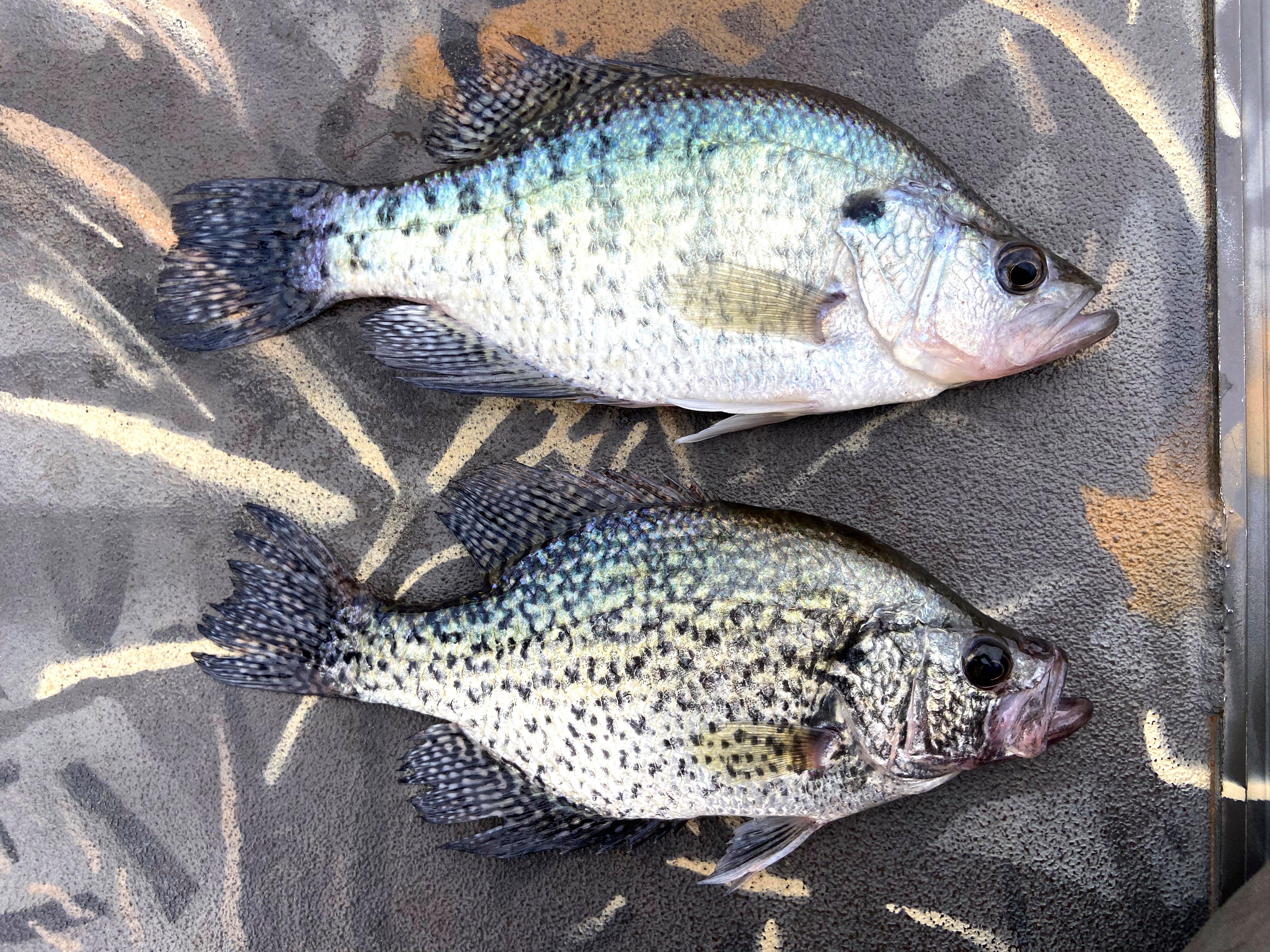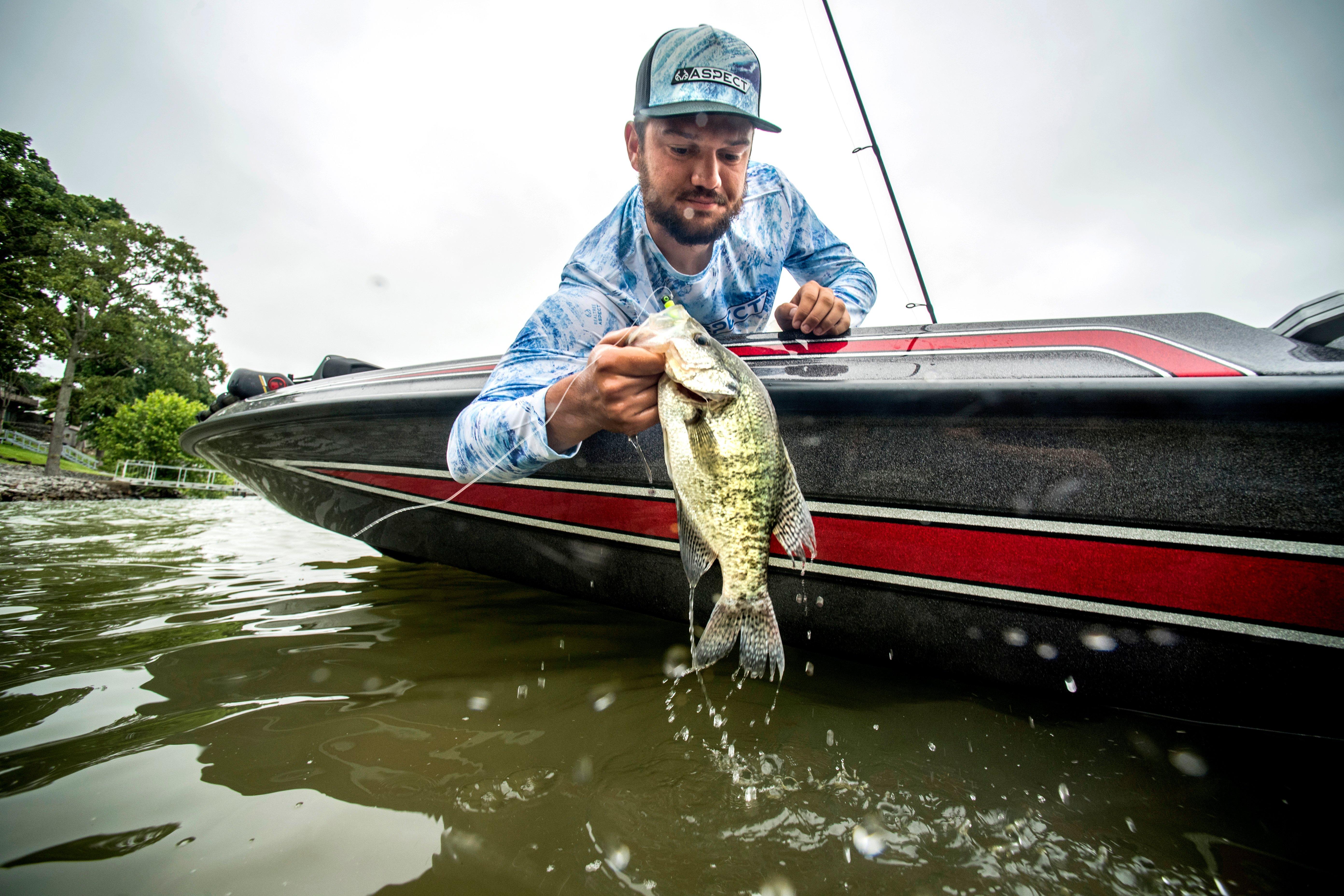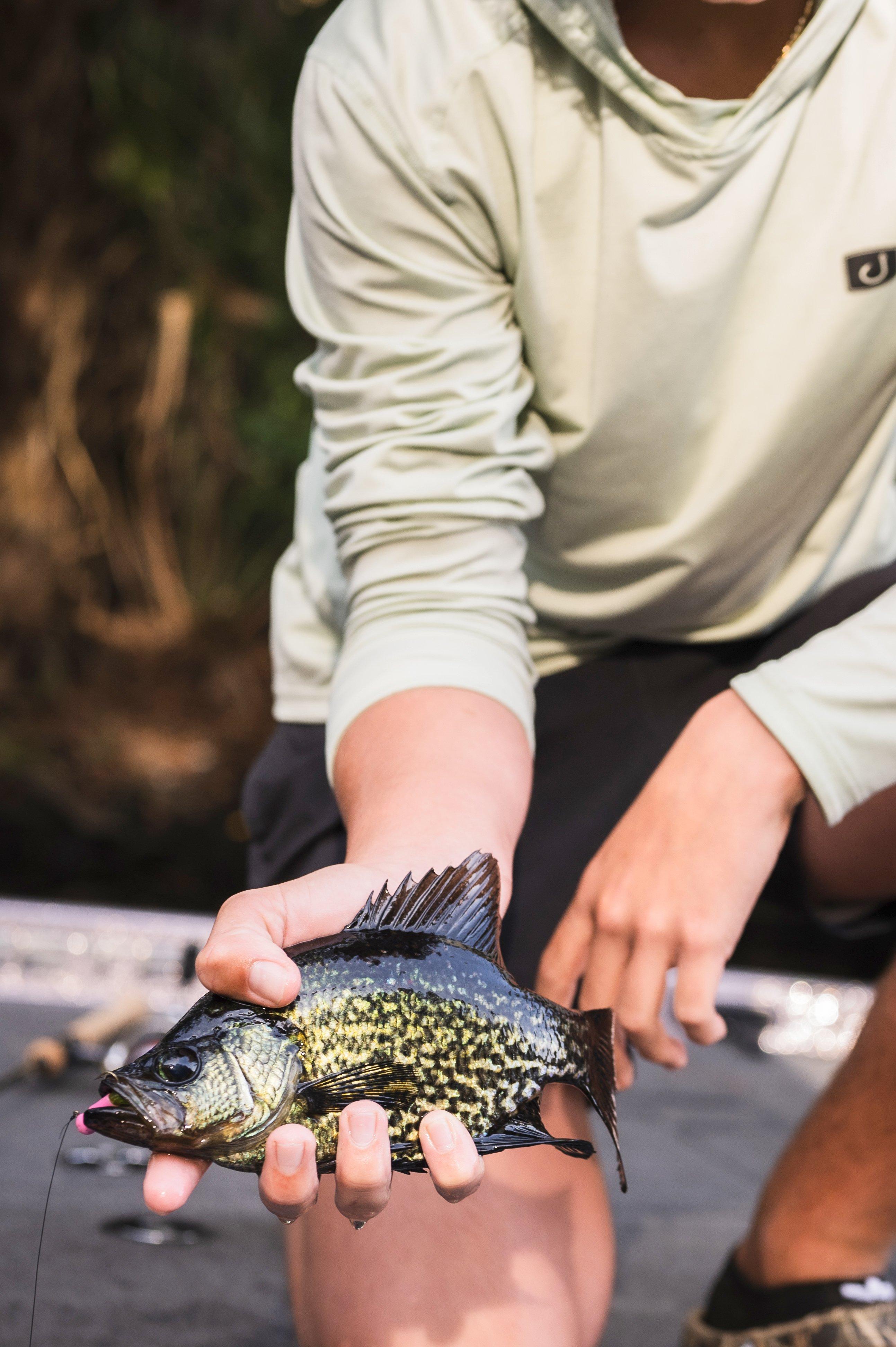These are two distinct species, but are there any real differences in fishing for them?
While crappies go by many names, from specks to calicos to sac-a-laits, most anglers figure they’re all the same thing. Sure, we know there are two familiar species, white crappie and black crappie, but they differ in name only, right? Locating and catching crappie is fairly universal, regardless of location, isn’t it?

While black and white crappie share many similarities, their differences are more than just skin deep. Image by Will Brantley
Maybe not. Current information on the subject leads us to believe that, while black and white crappies are close cousins, catching each might require slightly different tactics. We’ll get into that later. First, let’s review what we know about each crappie species from a scientific perspective.
Dr. Hal Schramm has been a go-to source of fish information for decades. A former professor at the University of Florida and Mississippi State, Schramm’s led numerous fisheries management and tournament organizations to better fish-care decisions. His knowledge on freshwater fish also provides solid insight to anglers. Much of what we’ve gathered came from Schramm’s instruction.
SIMILARITIES IN WHITE AND BLACK CRAPPIE
In terms of hardcore, scientific similarities between the crappie species, Schramm reports both preferring a similar temperature range (most often in the 70s), a productive spawning temperature in the mid-60s and similar spawning characteristics of nest-building and guarding eggs.
The species differ, however, in a number of ways. Looking at a white crappie reveals vertical bar markings, almost like rings around the fish. In fact, Pomoxis annularis, the scientific name for white crappie, includes the Latin reference for “having rings.” Black crappies simply feature black spots on an otherwise silver background. Both fish turn darker when spawning, but only male black crappies can exhibit the inky darkness that give them their name. At times, the entire fish turns nearly jet black.

White crappie feature vertical bar marking, almost like rings, and fewer dorsal spines than black crappie. Image by Realtree Media
In terms of body makeup, black crappies have seven or more dorsal spines; white crappies six or fewer. That’s a quick way to tell them apart in the field, if markings deceive you. Both fish mature at about 7 inches in length, and can grow quite large, in panfish terms.
Maximum size of each crappie specie is a highly debated subject. It’s true that more extra-large white crappies than black crappies are caught in North America. No doubt, the giant slabs caught in places like Mississippi’s Grenada and Sardis Reservoirs certainly steal the headlines.
But consider that numerous new black crappie records have recently been established, including the All-tackle world record of 5 pounds, 7 pounces, caught in Tennessee in 2018. Other 5-pound fish from Nebraska and California — both black crappies — have popped up, leaving us wondering which crappie grows larger.
DIFFERENCES
First, let’s get technical. The native range of black crappies was reported from southern Canada through the Great Lakes, and south to Florida and Texas. White crappies were originally located in the central portion of the United States, most often in the Ozark region. Both species have been introduced elsewhere — on purpose and accidentally — resulting in each occupying most of the country. Black crappies are the only species listed as established in the Great Lakes, but I’ve personally caught white crappies from Lake St. Clair, connecting Erie to Huron, so take these range estimates with a grain of salt.

Black crappie feature black spots with no distinct pattern and have 7 or more dorsal spines. Image by Millennium Promotions, Inc.
Hybridization does occur between the two species, but it’s undetermined how to best tell a hybrid fish.
The most notable difference in the species is in their spawning productivity. Black crappies produce somewhere around 50,000 eggs per pound of body weight, whereas white crappies may produce three times that many. This may have led researchers to deduce habitat preferences, which could be debatable. Read on.
FOLKLORE
Look into any white and black crappie debate, and you’re sure to read of a predisposition to certain habitats, possibly giving insight where to find each species. The old saying goes like this: black crappies like deep, clear water and vegetation, while white crappies favor murky shallows and wood cover.
***Don’t Miss: *HOW TO CATCH CRAPPIES ALL SPRING
True, you’ll find each in those places. But the reasoning behind this statement may come from where crappies are found based on other factors than preference. For example, white crappies grow well in reservoir environments where the water is often dingy and brush piles dominate the landscape. Does the mean those same fish prefer that environment? Hard to say.
Few places exist with varying water colors and forms of cover that are inhabited by both species. In other words, it’s hard to determine what each prefers. My personal observations throughout the Great Lakes system supports the idea that white crappies are drawn to boat docks and harbor areas, while black crappies can be caught from a variety of locations, including offshore weedbeds. But this is hardly scientific data.
One fact that seems to hold true is that white crappies excel in waters containing threadfin shad. They also seem to grow faster than black crappies. Again, this is often in reservoir environments, but these facts can help lead us in the right direction when searching for slabs.
FISHING CONSIDERATIONS
It’s always best to avoid generalizations, and fish uniquely to each environment. Just because shallow vegetation holds big crappies in Florida doesn’t mean the same rings true across the country.
What’s important to remember is that crappies, like most freshwater fish, concentrate on two duties: feeding and reproduction. Each should drive your fishing.
Both black and white crappies come shallow to spawn, so springtime efforts should focus on areas out of wind and current with abundant cover, in 1 to 5 feet of water. And both spawn in groups, meaning, when you find one crappie, you’ve likely found a bunch.
In natural lakes, crappies will stage in large bays and coves before and after the spawn. There, they inhabit deep weed edges, reeds, or drop-offs. Brush adds to the attraction. On most natural lakes, crappies feed heavily on insects and small panfish, so finding areas full of life is the key. Summer and winter finds those same fish in deep basin areas. Here, electronics become key to successful fishing days.
***Don’t Miss: *HOW TO PICK THE BEST SOFT-PLASTIC LURES FOR CRAPPIE FISHING
In reservoirs, crappies often turn to a diet of shad. Finding baitfish is the key to finding fish at all seasons of the year. When shad spawn in early summer, boat docks and seawalls hold tons of fish. Look for deeper docks in large creeks. In fall, crappies follow the shad migration to shallow water. Riprap banks and brush piles are often gold-mines. Winter finds the shad, and crappies, migrating back deeper. Channel banks on the main reservoir body or largest creeks hold the bulk of the slabs.
In each case, you might find white or black crappies. To most of us it doesn’t matter. Each are fun to target and outstanding on the table. As science continues to solve more species-specific mysteries, and modern sonar opens up entirely new places to fish, we’re sure to learn more. Until then, keep track of your own catches to organize a game-plan.











































